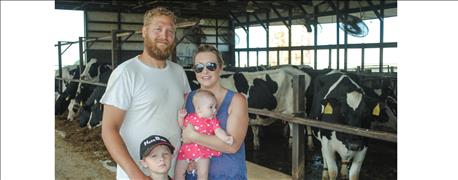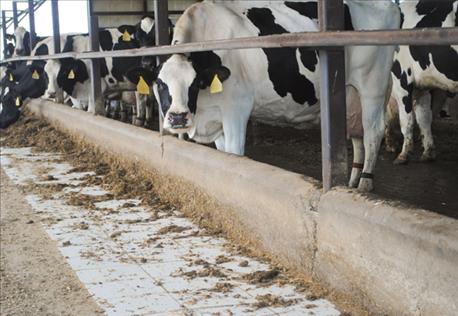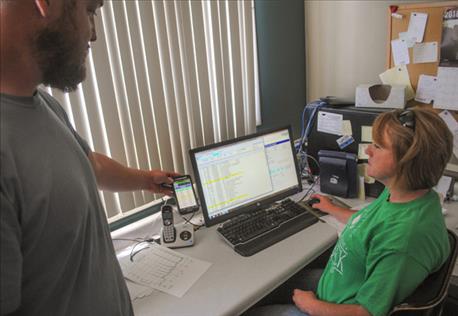
Handling manure is always a challenge for dairy farms. O and W Dairy, a sixth-generation family dairy near Royal, has developed several systems to handle dairy waste, and recycle water and nutrients in the process.

6 GENERATIONS: Heath and Wendy Snodgrass’ children — Stacy (left) and Claire — are the sixth generation at O and W Dairy near Royal.
One of the benefits of proper manure handling is clean barns and improved herd health. But handling manure and using lagoon systems are not the only ways to improve cow comfort and health. For the Snodgrass family, which includes Warren, son Roy and grandsons Heath and Seth, and their employees, TLC and cow comfort go hand in hand with water use and feed handling efficiencies. When they built a new milking parlor and loafing barns in 2000, and over the years since then, they installed numerous innovations to help meet their goals.
Here are a few things they have added to improve herd health and overall operation efficiency:
Ceramic tiles on the feeding floor. When they built their new loafing sheds and barns, keeping things clean was a priority, Warren says. He had visited several large dairies that had installed ceramic tiles into the concrete along the feeding area. They installed tiles in the same fashion in the new structures when the concrete flooring was poured, so cows would eat from an area that was actually tiled. This practice reduces feed waste and is easier to keep clean, providing a better surface for cows to eat from.

CLEAN EATING: When they built their new barns in 2000, the Snodgrass family installed ceramic tile on the feeding floor so cows could clean up their feed more easily on the smoother surface.
Swinging cow brushes. As cows meander through the loafing sheds, they can rub their bodies against large, automatic brushes that clean excess hair or manure from their hides. “This is one of the reasons our cows are so clean,” Heath says. “They are constantly rubbing up against the brushes. As soon as they start to rub the brush, it engages and they can walk and stand alongside the brushes while they work.”
On-farm mastitis testing. Carol Hahlbeck, who works the office and computers at O and W Dairy, does an on-farm mastitis test for cows that are suspect. That way, the results are immediate, without guesswork. “If we have a positive test, then we can start treating right away,” Heath says.
Ankle bracelets and cow data. Each milk cow is equipped with an ankle bracelet that identifies that cow and her records, and transfers data from each milking to the Snodgrass computer systems. Carol can monitor production for each cow each day with the state-of-the-art data handling system. Heath and other family members and employees can access the data through their smartphones. This type of detailed monitoring is important for maintaining efficiency on the production side, and it helps the dairy maintain stellar herd health.

KNOW YOUR DAIRY DATA: Carol Hahlbeck inspects herd records in the office of O and W Dairy. Heath Snodgrass demonstrates how he can access those records with his smartphone.
Fans and sprinkling system. Each pen has its own sprinkler system, which is set up on timers. The sprinklers engage for a specific period and automatically shut off, so the cows do not stand beneath sprinklers all day. According to Heath, when the sprinklers shut off, the cows lay down in their sand stalls under the fans to cool off. Sprinklers and fans are set to engage automatically at specific temperature readings, to provide needed comfort to cows and to prevent heat stress.
About the Author(s)
You May Also Like






